If your PC is having trouble running a game, disabling third-party application overlays can resolve the issue. These overlays refer to statistical information or widgets that are displayed on your screen while playing a game. The majority of PC applications have some sort of built-in overlays that can be displayed during your gaming session. Most of them take up a lot of your PC’s processing power because they update information in real-time.
- In-game application overlays are interactive widgets or statistical information that can be displayed in the middle of your game.
- You can reap great benefits by disabling in-game overlays if you have a low to mid-end PC. These benefits include a boost in your frame rate and the resolution of crashing issues.
- Most applications have a settings section dedicated to in-game overlays. This saves you the time and needs to search through menus.
- You can use this overlay settings section to disable most of the major application overlays.
- Some of the most commonly used application overlays include Discord, GeForce Experience, AMD Radeon Software, Steam, and the Xbox Game Bar.
Why You Should Disable Third-Party Application Overlays
Similar to disabling hardware acceleration in applications, it can be very beneficial to disable these in-game overlays. This is particularly true if you have a low or mid-end PC, as these overlays can consume more processing power than you might imagine. Disabling overlays in third-party applications will allow your PC to allocate the extra processing power towards optimally running the game.
How To Disable Third-Party Application Overlays
Fortunately, most applications have dedicated settings for disabling in-game overlays. Therefore, you will not have to search extensively or go through tedious menus. However, the disabling process does tend to differ from application to application. That is why I have compiled a comprehensive list of the common application overlays widely used by gamers.
Discord
Discord is possibly the most consistently used application by most players. It features VC (Voice Call) overlays. Discord will display their profile icons on the screen if you are in a voice channel with other users. Every time a player speaks, their icon will be highlighted with a circle. In my opinion, this feature is not essential for most players and can consume a significant portion of your PC’s processing power.
Here is how you can disable Discord overlays:
- Launch Discord and click on the gear icon next to your Discord profile.
- In settings, scroll down to the Activity Settings section and click Game Overlay.
- Now toggle the switch to off and save settings.
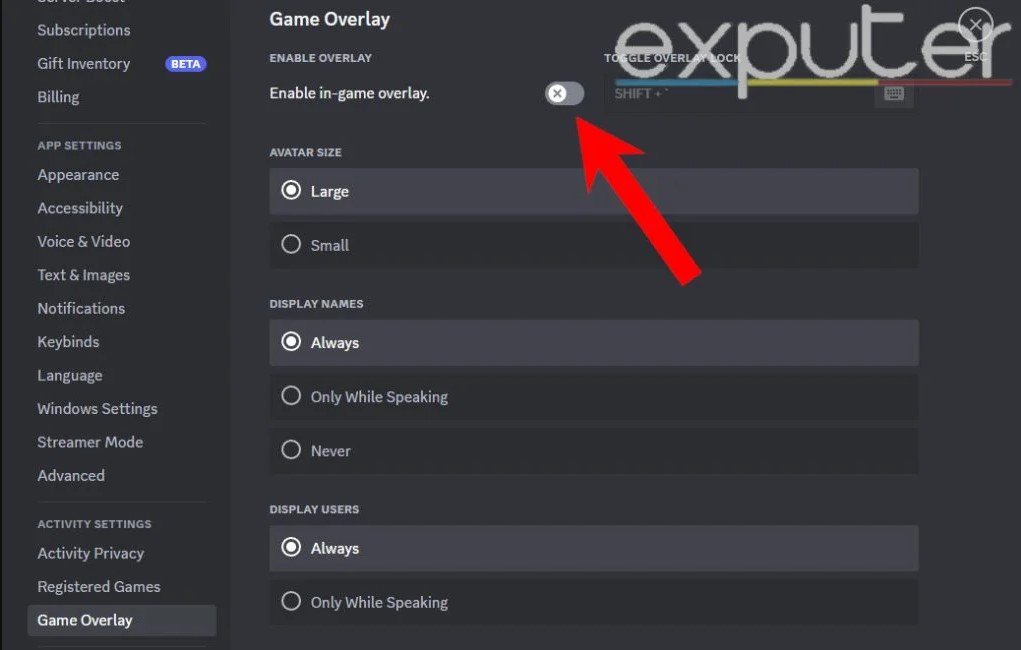
NVIDIA GeForce Experience (Shadowplay)
The NVIDIA GeForce Experience overlay (also known as Nvidia Shadowplay) might be the most useful in-game overlay on the list. It lets you record your gameplay, do instant replays, and even Livestream. Though, because of the instant replay feature, your gameplay is constantly captured. This also means that there is an excessive load on your PC all the time.
Here’s how you can disable Overlay for GeForce Experience (Nvidia Shadowplay):
- Press the Windows button on your keyboard and open the start menu.
- Type GeForce Experience in the search bar and click on the result.
- Once in, click the gear icon next to your profile to access the settings.
- Make sure you are in the general settings section.
- Scroll down slightly to find IN-GAME OVERLAY. Toggle the switch off to disable it.

AMD Radeon Software
The AMD Radeon overlay allows you to access all of the Radeon Software features while in the middle of your game. While this seems intuitive, I recommend simply tabbing out and accessing the Radeon Software features directly. I believe you will not miss much by disabling its overlay.
Here’s how to disable AMD in-game overlay:
- Press ALT + R simultaneously on your keyboard to open the Radeon Software.
- Click the Gear icon to open Radeon Sofware’s settings.
- Go to the Preference section and click on General.
- Now toggle the In-game overlay to off.

Steam
Steam’s in-game overlay has some great features. You can see your games wishlist, send invites to friends, access the Steam community, and much more. You essentially get access to the entire Steam launcher while playing your game. Again, with these many features, the burden on your PC is bound to be massive. As such, I suggest that you disable the overlay and access Steam directly by tabbing out of your game.
Follow these steps to Disable Steam’s in-game overlay:
- Launch Steam and navigate to the top left corner of the screen.
- Here, click on Steam to open a drop-down menu. In the menu, click settings.
- Select the in-game overlays section and uncheck “Enable the Steam overlay while in-game.”
- Click OK to save the changes.
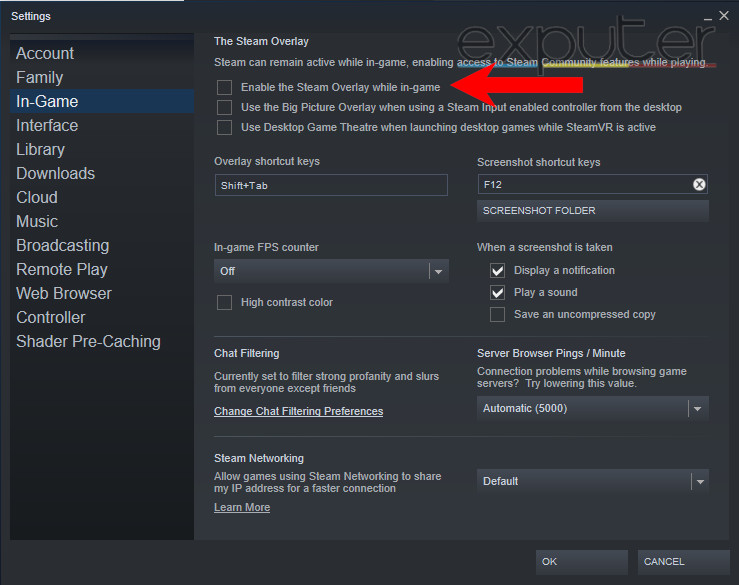
Xbox Game Bar
Like the GeForce Experience overlays, the Xbox Game Bar’s main feature is recording your gameplay or taking screenshots. Some minor features include the ability to see your Xbox achievements or start an Xbox chat. The way I see it, this is one of the most impractical overlays on the list. Most PC players don’t utilize Xbox features or have the need to look at their achievements mid-game. Therefore, it’s always a good idea to turn off the Xbox Game Bar, even if you frequently utilize Xbox features.
This is how you can disable the Xbox Game Bar:
- Open the start menu by clicking on the Windows icon on your Desktop.
- Click the gear icon to access Windows Settings.
- In settings, select the Gaming section. Here, make sure you are in the Xbox Game Bar tab.
- Now toggle the Xbox Game Bar switch to off.
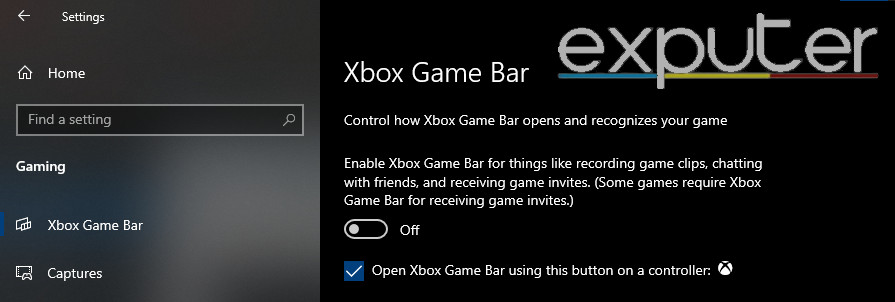
Origin Client
With Origin’s in-game overlay enabled, you can view your messages and friends list in the middle of your game. My recommendation is to disable this feature if you don’t have a strong PC and struggle with frame rate issues. Here’s how to do it:
- Launch the Origin client and log into your account.
- Once in, click Origin at the top-left corner of your screen to open a drop-down menu.
- From the menu, click on Application Settings.
- Now select More and click ORIGIN IN-GAME.
- Here, toggle the switch of Origin In-Game to Off.
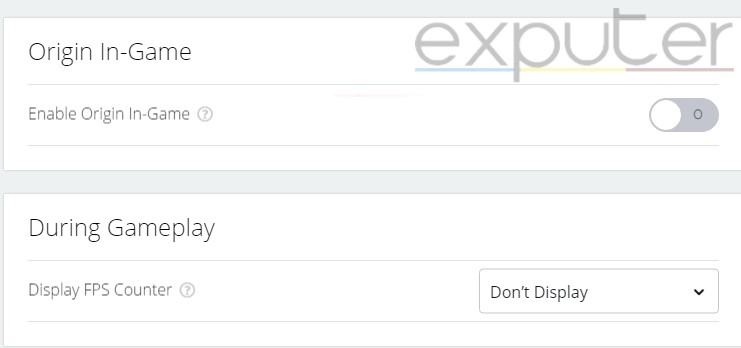
MSI Afterburner
The MSI Afterburner software uses Rivatuner’s Statistics Servers (RTSS) to display in-game FPS and other information like your system’s temperature. These applications have direct access to your GPU and often encounter compatibility problems with some games. If you do not need RTSS, I recommend uninstalling it from your PC. However, if you prefer to solely disable the in-game overlay information, follow these steps:
- Launch your MSI Afterburner software and click the Gear icon to access the settings.
- Switch to the Monitoring tab and uncheck Show On-Screen Display.
- Next, uncheck every single option in the Active Hardware monitoring graph section.
- Once done, save your settings and restart your PC.
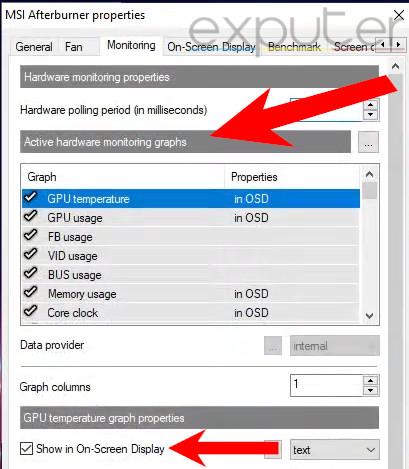
TeamSpeak
Similarly to Discord, TeamSpeak allows you to chat with other players through voice and text channels. TeamSpeak’s in-game overlay contains information like chat messages, currently speaking players, and more. Again, this overlay is not very useful, as you can access these same features by alt-tabbing out of your game. I suggest players with mid-end PCs to disable TeamSpeak’s in-game overlay. This is how you can do it:
- Launch TeamSpeak and click Tools to open a drop-down menu.
- Select Options from this menu to open the settings.
- Navigate to the Addons section and locate a plugin called “Overlay Plugin.”
- Click Uninstall to get rid of the in-game overlays.
- Now click Apply to save your changes.
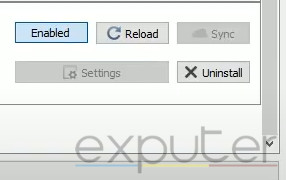
My Thoughts On 3rd-Party Application Overlays
I personally don’t use any 3rd-party application overlays even though I have a decently strong PC. I believe that the burden these overlays put on your PC is not worth it.
You should similarly disable other third-party application overlays not mentioned in this article. If your PC is experiencing frame drops, freezing, or crashing, my recommendation would be to disable every single application’s overlay. After disabling all the overlays, try restarting your PC as a good measure to ensure all settings are in effect.
FAQs
Your PC will have a much easier time running a game because you will relieve your PC from unnecessary burden. This can effectively resolve frame drop and crashing issues for low to mid-end PCs.
If an in-game overlay serves no purpose for you, it’s always advisable to disable it.
If you want to diagnose frame drops or monitor your frame rate, you can enable the FPS counter. You should pick a lightweight FPS counter, preferably a default one.
Check out our other general error fix guides:
Thanks! Do share your feedback with us. ⚡
How can we make this post better? Your help would be appreciated. ✍



